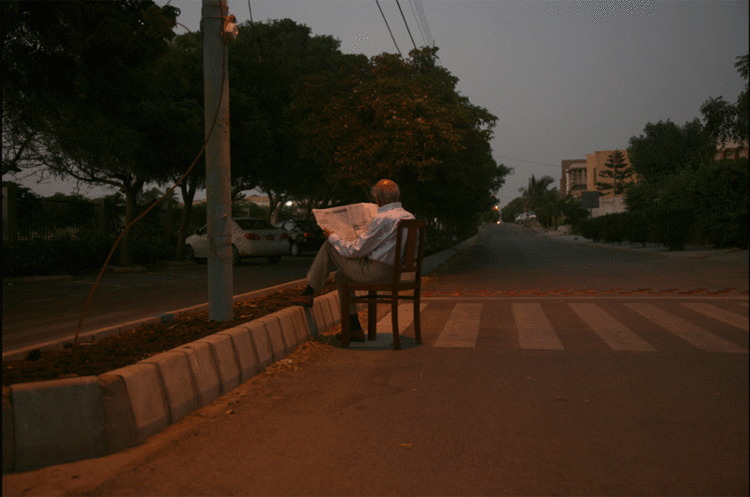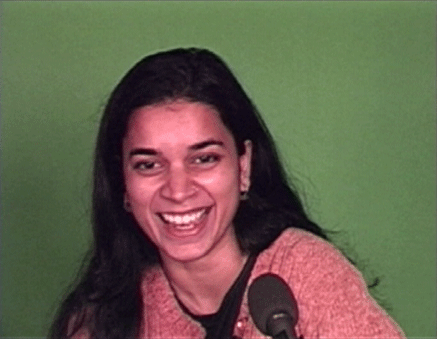Nationality Pakistani Books The Speech Writer | Website www.baniabidi.com | |
 | ||
Education Master of Fine Arts, School of the Art Institute of Chicago | ||
Bani abidi memorial to lost words edinburgh art festival
Bani Abidi (born 1971) is a female Pakistani contemporary artist. She has held numerous exhibitions and her works focused on political issues. She uses both photography and videos to make comments and critics on current politics and culture.
Contents
- Bani abidi memorial to lost words edinburgh art festival
- Baltic bites bani abidi
- Early life and art background
- Works and experiences
- Ideas and conceptions
- References
In 1994, she was awarded a BFA in painting and printmaking from National College of Arts, Pakistan. In 1999, she was awarded a MFA from School of the Art Institute of Chicago, the United States of America. From 2000 to 2012, she completed four residencies programme in different institutions.

Bani started to join group exhibitions and screenings from 2003, and held her solo exhibitions and screenings from 2006. She has so far joined over 80 group exhibitions and screenings worldwide and held her solo exhibitions for 12 times.

Baltic bites bani abidi
Early life and art background
Abidi was born in Karachi, the capital of Pakistani province of Sindh, in 1971. She lived in New Delhi and Karachi, and currently resides in Berlin. In 1994, she chose to study painting and printmaking, earning a Bachelor of Arts from the National College of Arts in Lahore, Pakistan. From 1997 she studied at the Art Institute of Chicago, completing a master's degree in 1999. While attending the Art Institute, she developed a profound interest in cinematography. She incorporated films with her other practices of art to produce works that address issues with nationalism and post-colonialism, specifically India and Pakistan. Relations between India and Pakistan have been complex due to a number of historical and political events. Relations between the two states have been defined by the violent partition of British India in 1947, the Kashmir conflict and the numerous military conflicts fought between the two nations. Consequently, even though the two South Asian nations share linguistic, cultural, geographic, and economic links, their relationship has been plagued by hostility and suspicion. Her interests are drawn upon the lives of individuals that are affected by these disputes.
Not only has she depicted subjects that deals with the historical events that occurred between India and Pakistan, she has created documentaries that portray the minority groups in Pakistan such as the Hindus, Christian and Zoroastrian—emerging into the twilight to briefly claim some space in a public sphere that is increasingly hostile to religious difference.
Works and experiences
Bani Abidi has shown her works in exhibitions and film festivals internationally and participated in numerous residency programs since 1996. Films like Mangoes and Karachi—Series 1 display her compassion towards ideas and subject manners that often depict religious, social, and political commentary.
In 1999, her film Mangoes touches the lives of a Pakistani and Indian women who eat mangoes together. They share each stories about their childhood that heightened sense of nostalgia and nationalism that exists in the Indian and Pakistani Diaspora. These women stress the idea of a shared history, while they eat a delicious, fruity mango.
For Karachi—Series 1 (2009), she photographed non-Muslim Pakistanis in the street at dusk during the holy month of Ramadan, when the metropolis is quiet as Muslims sit down to break their fast. Abidi renders visible the Hindu and Christian minorities, which together constitute less than five per cent of the population, acknowledging that the city is their home too by inviting them to carry out mundane domestic activities—reading a newspaper, ironing, arranging flowers—in public space.
As she thought “Pakistan is actually only depicted in news media and almost never through film, literature or art”, in 2000, she started working primarily in video instead of just using photography to comment upon politics and culture. “I prefer to engage with things I may or may not find important at my own discretion, and feel a bit throttled by the world’s anxious curiosity about Pakistan. So I think I make a conscious effort to stay away from a flat definition of what is critical or political, both conceptually and visually.” Although there were only few artists, especially female artists working with video and photography, she believed it would succeed, “As for the media of video and photography, they are only now starting to be used by younger artists.”
She also tried to participate in numerous residency programs between 2000–2012. In 2011/2012, she was the artist in Residence at DAAD Artists Residency in Berlin.
She has shown a lot of her works in different exhibitions, which proved that her works was evocative to the people, both in politics and culture.
Ideas and conceptions
The ideas and concepts of her works were all from her own divided biography (Doshi, 2010). Her works consist of heavy political and cultural elements, the tension between Pakistan and India in particular (Cheng, n.d.) . Her works showed her critiques to culture and politics (Guggenheim.org, n.d.), most of the time, she comment through absurd vignettes and humorous (Anon, n.d.).
The sense of political and cultural elements came from her first trip to India when she was 21 years old. It was the very first time for her to feel her own place in the North Indian history. When she was studying in Chicago, she ended up the friendship with many Indians. It had then turned to an understanding of the contradictions between the conflicting national identities between Pakistani and Indian. The cross-border friendships between Indian and Pakistani was described by Bani Abidi as “seamlessness” and “comfort” in which the friendships gave her a pleasant surprise because it was unlike the exclusionary national narratives produced by the two countries (Cheng, n.d.).
